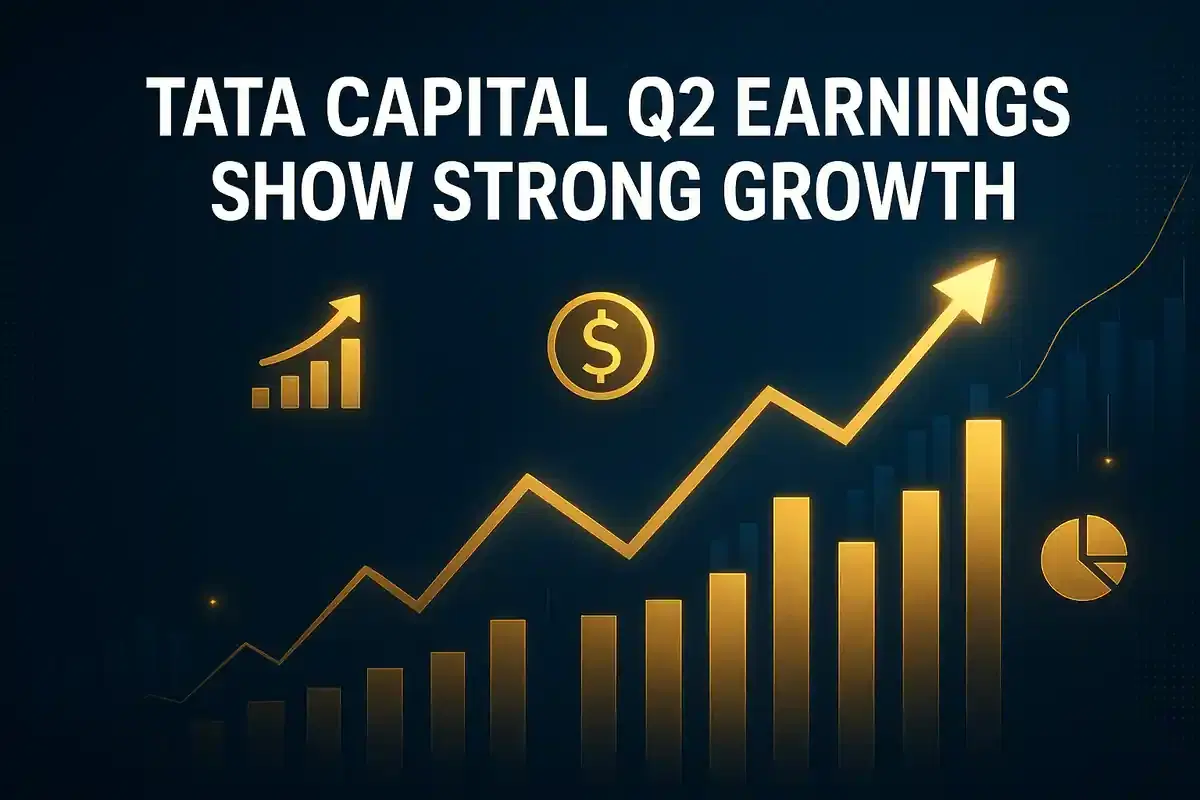Tata Capital Reports Strong Q2 Profit Growth, Outlines Positive Full-Year Financial Outlook
Banking/Finance
|
29th October 2025, 2:11 AM

▶
Short Description :
Detailed Coverage :
Tata Capital has released its financial results for the second quarter, reporting a net profit of ₹1,097 crore, an increase of 11% compared to the previous quarter. The company's core income, known as Net Interest Income (NII), saw a 4.8% sequential growth, reaching ₹3,004 crore, and a substantial 17.3% increase year-on-year. Provisions were managed down by 15% from the prior quarter to ₹773 crore. Assets Under Management (AUM) also showed positive momentum, growing 3% to ₹2.43 lakh crore as of September 30, 2025. The company highlighted that retail and SME segments form approximately 88% of its gross loan book.
Looking ahead, Tata Capital has set ambitious guidance for the full fiscal year. It expects AUM growth to be in the range of 18% to 20%. Credit costs are projected to decrease to nearly 1.2% from the current 1.3%, and the cost-to-income ratio is targeted between 38% to 39%, down from 39.7%. A key expectation is for the Return on Assets (RoA) to rise to 2% to 2.1% from the current 1.9%. Despite a marginal 3% fall in net profit this quarter, the management foresees a strong full-year net profit growth of 35%.
Furthermore, Tata Capital's MD & CEO Rajiv Sabharwal confirmed that the integration of the recently acquired motor finance business is proceeding well, with a focus on achieving profitability in this segment by the fourth quarter of fiscal year 2026.
Impact: This news is positive for Tata Capital's performance and outlook, indicating potential stability and growth in the Indian financial services sector. Rating: 7/10.
Heading: Difficult Terms Explained Net Profit: The profit a company makes after deducting all its expenses, interest, and taxes. Net Interest Income (NII): The difference between the interest income a financial institution earns from its lending activities and the interest it pays out to its depositors. Provisions: Funds set aside by a company to cover potential future losses or expenses that are probable but not yet quantified. Assets Under Management (AUM): The total market value of all financial assets that a financial institution manages on behalf of its clients. Retail and SME segments: Retail refers to individual customers, while SME stands for Small and Medium-sized Enterprises, representing business clients. Retail unsecured loans: Loans provided to individual consumers that are not backed by any collateral (like property or vehicle). Credit Costs: The amount of money a lender expects to lose from loans that are unlikely to be repaid, often expressed as a percentage of total loans. Cost-to-Income Ratio: A measure of a company's operational efficiency, calculated by dividing its operating expenses by its operating income. Return on Assets (RoA): A profitability ratio that measures how efficiently a company is using its assets to generate profit.